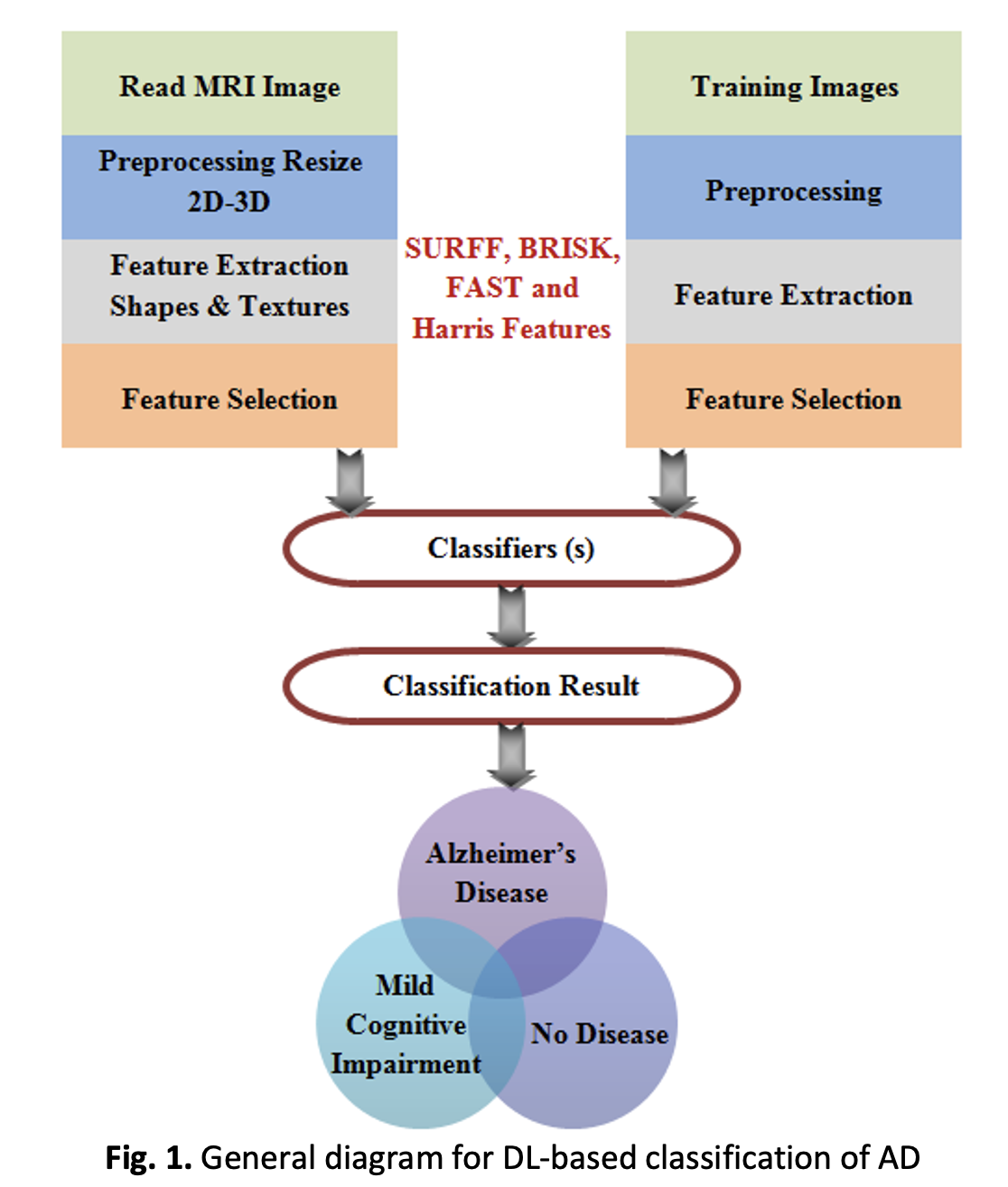An Overview of Deep Learning Approaches for Alzheimer’s Disease Classification: A Review
DOI:
https://doi.org/10.37934/araset.33.1.122140Keywords:
Multi Cognitive Impairment (MCI), Amyloid, Structural MRI (sMRI), Neuro fibrillary, Feature extraction, Long Short Term Memory (LSTM), Artificial Neural Network (ANN)Abstract
The most impressive organ that has the ability to produce emotion, flexible enough to enthusiastically modify itself, and is more potent than any computer ever created is the human brain. The well-known form of dementia, which is characterized by progressive loss of memory and cognitive function that affects more than 15 million people globally, is termed Alzheimer’s Disease (AD). Nevertheless, for neurologists, AD classification is a well-known problem. For the classification of various stages of AD, enormous techniques are wielded recently. Grounded on Deep Learning (DL) approaches, a review was done on AD classification. The recent research on the classification of AD grounded on Feature Extraction (FE) and selection approaches and Deep Neural Network (DNN) centered classification along with the dataset-centric classification of AD are emphasized by this research. Finally, regarding performance metrics, the performance of the several approaches wielded for the classification of AD is analogized.
Downloads





























